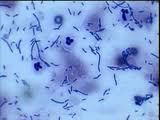
Treating Ear Infections in dogs and cats
Treating ear infections first of all involves diagnosing the cause of the ear infection and treating it. Many pet owners think that if their pet had an ear infection before and the drops they got from their vet worked the last time, if they buy more of the same drops the drops will cure it. But not all ear infections are the same, even if the discharge looks similar to a previous ear infection. Ear drops on the market can either contain a specific antifungal or antibacterial or, be a simple flushing drop with an altered pH (usual over the counter type ear drops), or have a combination of an antifungal, antibiotic and a cortisone (steroid) to treat allergies. They can get quite pricey so its worthwhile getting the ear infection properly diagnosed prior to putting any ear drops in.
